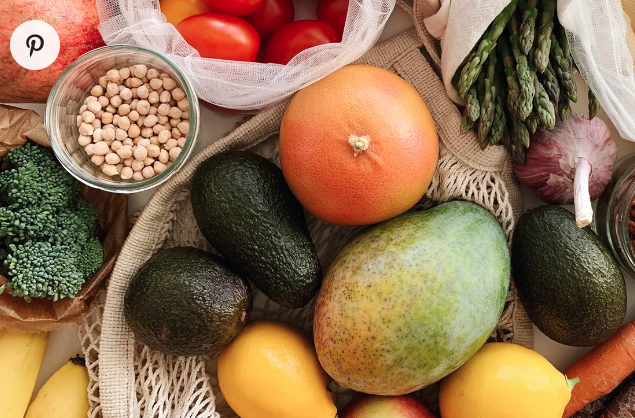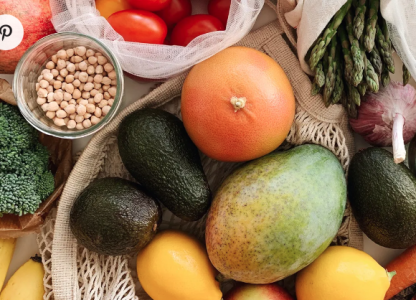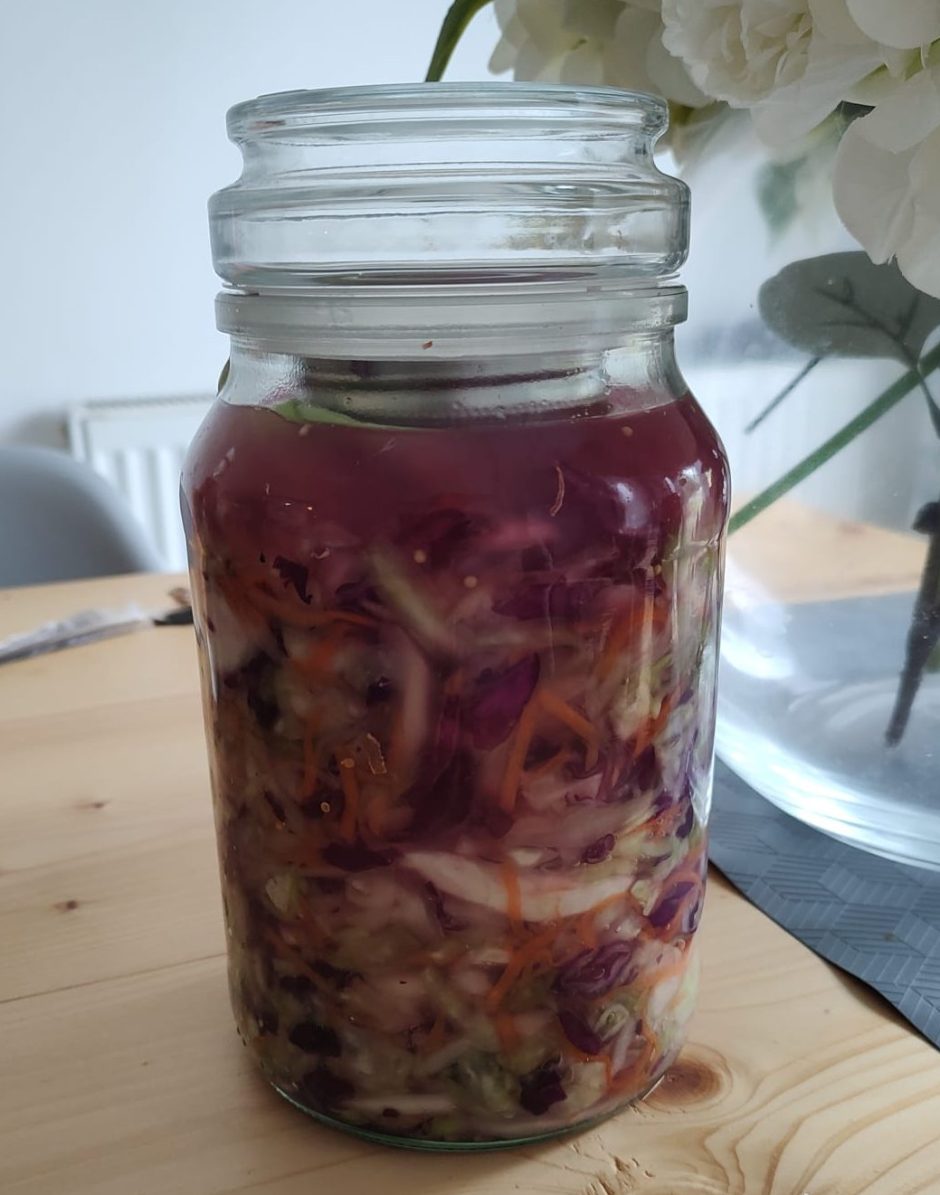This post should be easy to start given the breadth of research evidence. Why whole-foods. Why plant*-based? It is largely self-education based.
Plants: vegetables, legumes (pulses, beans and peas), grains, nuts, seeds, herbs and spices.
A plant-based diet appears to be beneficial for human health by promoting the development of more diverse and stable microbial systems.
Tomova et al., (2019: 47)
It should be easy right? But it is not that easy. There is no clear definition of what constitutes either. So let’s go with basic principles. Avoiding, “one-size-fits-all guidelines,” Dr Tim Spector offers “generic advice that could apply to everyone,” as a 12 point plan for a more healthy living at the close of his book “Spoon-Fed: Why almost everything we’ve been told about food is wrong” – it is clearly in favour of both more plants* and a good dose of self-education.
- Eat diverse foods, mainly plants, without added chemicals
- Question the science and don’t believe quick-fix single solutions
- Don’t be fooled by labels or marketing
- Understand you are not average when it comes to food
- Don’t get into food ruts: diversify and experiment
- Experiment with meal timings and skipping meals
- Use real food, not supplements
- Avoid ultra-processed foods with over ten ingredients
- Eat foods to improve gut microbe diversity
- Reduce regular blood glucose and blood fat spikes
- Reduce meat and fish consumption and check its sustainability
- Educate yourself and the next generation in the importance of real food
It would appear that I am more of an essentialist and more of a nudger.
Update 03.08.23:
In writing this post, responding to comments and explaining these ideas further, whilst continuing to “educate myself,” it has become more evident the confluence of “nutrition, wellness and habits” flexes to your current outlook, your future aims and past experiences. If these marry with improving your long-term health, reversing ill-health, or like me, losing weight, then Dr Mosley summarises three stages in the “million-copy best-selling” Fast Diet 800. When I get time, I will thread my personal lived experience with his commentary.
- Stage 1 – rapid weight loss (2-12 weeks)
- Stage 2 – shorter eating windows (fasting – maybe)
- Stage 3 – be healthier, happier, live longer
These stages are unpacked and my lived experienced added – in The confluence of ‘Nutrition. Wellness. Habits.’ For now back to “whole-foods” and “plant based” – but “not only.”
- Nutrition
- Diverse whole-foods (polyphenols and fibre), fermented foods, mainly plants (VLGNSHS), brighter and colourful, without added chemicals
- The flip side – avoid “ultra-processed foods with over ten ingredients” and reduce highly processed foods
- Reduce sugars and starchy carbs (and those foods that are rapidly converted to sugars: potatoes, cakes, biscuits, white rice and pasta, breakfast cereals
- Berries, apples, pears over tropical fruits, after or with proteins and fats – more here.
- More ‘complex carbohydrates’ – whole grains (thumbs up for buck wheat), pulses and legumes (mixed beans)
- Move towards healthy fats, olive oil, nuts and seeds
- Legumes: beans, pulses, lentils and peas – could have been adopted sooner if I knew better
- Time restricted eating – see Habits
- Drink healthily – water in the fridge
- The flip side – avoid “ultra-processed foods with over ten ingredients” and reduce highly processed foods
- There is more to food than just unreliable and inaccurate calories – learn about the food matrix and food eating order (PPFs – plants, then proteins and fat, then starches if you have them)
- Protein is very satiating
- Diverse whole-foods (polyphenols and fibre), fermented foods, mainly plants (VLGNSHS), brighter and colourful, without added chemicals
Update 13.08.23:
VLGNSHS, legumes and dried rather than tinned “dry beans.” I had just read “Power Pulses” and was looking for red lentils when by chance I stumbled upon “Alma Latina” dried Lima, Borlotti, Cannellini and Black beans in Lidl. Two posts, part I and part II go into more details on why beans should be on your radar.
There is nothing wrong with tinned, they are convenient, I have been buying tinned mixed beans, however, as I was quickly learning there is more versatility with dried beans, more control over the flavours and they are comparatively far less expensive and a lot less expensive than meat protein.
Incidentally, both beef and beans are high in calories, beef has about 130% more calories than beans, more protein, lighter in carbs and dietary fibre and much heavier in fat. The education continues.
| Tinned beans (400g / 235g) | Dried beans (900g / 2.4kg) | 5% Minced beef |
| 60-70p = 30p per 100g | 10p per 100g | 80p per 100g |
- Wellness
- Build a relationship with your food (3Es – explore, experiment and educate) and with those you enjoy eating with
- Explore foods, experiment with food, educate yourself – eg fermentation, home-baked bread, beer and wine?
- Start the day with a personal investment – a wellness walk, 50 press-ups, a cold shower – there are lots one-things to choose from Dr Mosley’s ‘Just one thing.’
- Habit
- When we eat, is as important as, what, how and who with… (A summary of Dr Satchin Panda’s research and more general reading and commentary)
- Preparation (and travel food), portioning
- No food is excluded – be sensible
- Time restricted eating 14:10
- 7 days-on – is the aim. According to Dr Panda, 5 days is the minimum before you’ll have to pay a health surcharge
- Preparing and portioning food – batch cooking, two layer jars, Bento boxes encourages good decisions throughout the day
- Adding a personal investment at the start of the day (wellness walk, 50 press-ups) again encourages good decisions throughout the day
- When we eat, is as important as, what, how and who with… (A summary of Dr Satchin Panda’s research and more general reading and commentary)
Whole foods: Minimally or unprocessed. I do consider the food matrix, what processing I add to my food and the combinations of food. There is more to food than just calories. If I remember, I tuck into the plants, then proteins and fat, then starches. More often than not the plate is a mixture. Limit additives (and any words I cannot easily pronounce, less than 10 ingredients) and avoid processed removals terms such as “low” or “reduced”, “rich in nutrients.” Fermented foods get a big thumbs up. I encourage you to explore foods, combining foods, the brighter and more colourful (polyphenols) the better, and diversity over 5-a-day – every day. More whole-food, plant based, simply means less of the other – primarily in the cross-hairs “ultra-processed foods.”
Exploring foods this past 100 days has introduced chia seeds, turmeric, samphire and dates and reintroduced prunes and sauerkraut. Toasted buckwheat is delicious – More preparing and portioning, better personal organisation and more cooking and chatting with my mum about cooking .
Plant based – but not only: More here. As for the “not only,” I am not directed by any particular food decisions so enjoy meat, fish, eggs, seafood, however I now eat less meat than previously, eating more, and a greater diversity of plants, more fish (SMASH), especially tinned sardines and anchovies, more nuts and seeds. It all adds up to less meat – not no meat. What is more, it will be less going forward as I include more legumes (pulses, beans, lentils and peas).
I will set aside any ethical, moral, organic or sustainability discussions. That’s your decision. It is always a question of
Bottom line – Why?
Whole-food, plant-based: We are back with nutrition and wellness – education and extensive number of health benefits of legumes, reduced heart disease, chance of obesity, of diabetes… it is a long and convincing list, is hard to look past.
I am getting older. That is not going to improve. Life is not going to be kinder, any time soon. The decisions are investments in my own future.
Habits. Nutrition. Wellness. This is first and foremost about informed decisions. Personally, I am aiming for a “better me” and following the hard work invested in losing a lot of weight, I am seeking a long-term, easier weight management and wellness outlook. Explore, experiment with, educate yourself about (read the label). It may have started with nutrition, wellness and habits, it is now very much habits, wellness and nutrition.
When, what, and how and who with: Yes, whole-foods. Yes to plant based diversity as it is important for cultivating a healthy gut microbiome, that plays a vital role in digesting food, building a stronger immune systems and a better metabolism, but it is also when you eat, as well as what you eat (steady change), and how and who with… that is important.
What does that look like day-to-day
- A wider diversity, brighter and more colourful, and greater proportion of the complete meal as vegetables (60-90%) – in place of potato, pasta (currently spiralised vegetables) and rice (looking for an alternative). Lemon juice on vegetables too (try it before you shout at me)
- More plants and protein at breakfast – travel breakfast: various berries / fruits, seeds, with various oats and Greek yogurt. Weekend breakfast: spinach, mushrooms and eggs or avocado / broad beans on sour dough, scrambled eggs or omelettes, at the weekend
- As for grains – oats feature highly at breakfast and as a travel food as more recently as desert toppings – overnight oats, toasted oats and seeds, oat cakes, oat cookies, homemade x10 chewy granola bars, x10 pear and blackberry healthy crumble – see below
- Grains with yoghurt – thinking about the food matrix
- Approaching 100 days – I am now looking more broadly at grains. Buckwheat, toasted and added to your granola is highly recommended.
- Lentils – and more Indian cookery
- Various grains for bread making
- Lots more legumes, mainly tinned. Mixed beans x6 with lemon or lime, chilli and fresh herbs – x10 plants right there
- More and greater diversity of fruit, frozen fruit by the handful, a lot more colourful berries – less tropical fruits
- More dried fruits, sultanas, raisins, dates, prunes, figs, apricots, cherries and cranberries, used sparingly – in, on and as dishes and also seeds
- Bulk-buy nuts and seeds. x10 trail mixes and x10 chewy granola bars, (half get frozen for storage) almonds, pecans, cashews, peanuts (red skins and pale) (home roasted), Brazil’s and walnuts raw. Pumpkin and sunflower seeds are just thrown in, into almost anything, anytime. Now chia, poppy and sesame seeds – some seed mixes
- Spices, herbs and seasonings – just more and a wider variety. With the more exploring and experiments has come new flavours, like fresh turmeric and harissa and chipotle pastes and Ras el hanout – with the flavours carried by yet more plants
- More SMASH fish, more tinned fish, more seafood
- Olive oil for cooking, coconut for granola and baking
- My eldest made a fab fruit healthy crumble, 3 large ramekins 3/4 filled with fruits (two fruit minimum) ginger, lemon zest and sprinkle of chia seeds to thicken juices, topped with a healthy crumble mix of 100g oats, 100g chopped pecans / walnuts, 30g pumpkin / sunflower seeds (bound together with 2 tbsp of maple syrup, 1 tbsp melted coconut oil – are these plants too? Polyphenols – yes.)
- Baked for 50 minutes – preheated oven 180. Served with Greek yogurt.
- Black coffee and green tea. Chilled water is always in the fridge, with lemon, lime, ginger, thyme or ____________. Add your own blank.
- Exploring fermented foods (4Ks), making bread, enjoying sourdough and next learning how to make sourdough
- 70% dark chocolate moved to 85%
- More courses – 2 preferably 3 courses. Greater diversity over different courses. Time between courses, slows eating, promotes satiety. Starters easy 90%+ plant, desserts 70%+, often served with Greek yogurt. Smaller portions required. Downside – washing up.
- More bulk buying (nuts, seeds and dried fruit) and checking the reduced section for food adventures
- More batch preparing, more effort at portioning and avoid “tubs of”, cooking and freezing (resistant starch) – bread is in the freezer.
- 14:10 TRE – time restricted eating pattern or a “ten hour eating window” – honestly it is not difficult. After the second week, you will appreciate the good nights sleep it promotes. (10:30am – 7:30pm is common. (Far fewer late night snacks).
- Only 10% of adults eat within a 12 hour cycle
What we do from sun set to bed time is critical.
Dr Satchin Panda
Now that I “managing my weight” within a weight corridor 160-165lb: I have moved back to full fat yoghurt for satiety and taste, I enjoy a little more unpasteurised cheeses, a glass of wine with dinner if I want to.
If I wander out of the weight corridor, I move back to a leaner, lighter, diet for a week much closer to a 5:2 diet without the unreliable, inaccurate calorie counting. Look out for the referenced mice on binge-eating in “better-me” part II.”
Less
- Fewer potatoes and sweet potatoes
- Less high processed “fast food” – I would rather treat myself with something a little more expensive than usual – often fish or seafood.
- I do enjoy ice-cream* (so buy ice-creams, and enjoy an ice-cream rather than the whole tub) and jelly sweets at the movies (nothing is “no”). I will say I now reflect how sweet these products are!
- Less processing – linking to the food matrix
- No fruit juices
- Very few refined grains – white / beige foods are rarely dished – more plants
- My son made fresh pasta for the first time – I was not going to miss that. We all had smaller portions of pasta than usual, with roasted aubergine and celeriac (50p from the reduced area) and Parmesan, three colour tomatoes and fresh basil, salmon. That was followed by the fruit crumble and Greek yoghurt above.
- Very little processed convenience anything – processed meats (eg sausages, bacon, cooked meats), shop bough “foam” bread, cereals…
- Sweeteners are being phased out – that includes diet drinks and coffee syrups. I might try a little maple syrup in my coffee (yes I know it is still sugar)
Plus, transitioning to a more plant-based diet has many positives. Do seek advice as there are a few fibre and immunity pitfalls to be aware of.
Since posting, I continue to add new foods. I have since tried chia seeds (great as a pudding and handy as a cooking thickening agent), samphire (salty and delicious), dates and reintroduced prunes and figs, welks (and they are not even a plant), enjoyed our own kraut (learnt more about fermentation too) and made bread.





Pingback: Beware of the bliss point – you can just stop – Edventures
Pingback: Nutrition and the 3 Es over #104 days – Edventures
Pingback: Legumes – starting with beans (part I) – Edventures
Pingback: Legumes – the 3Es with beans (part II) – Edventures